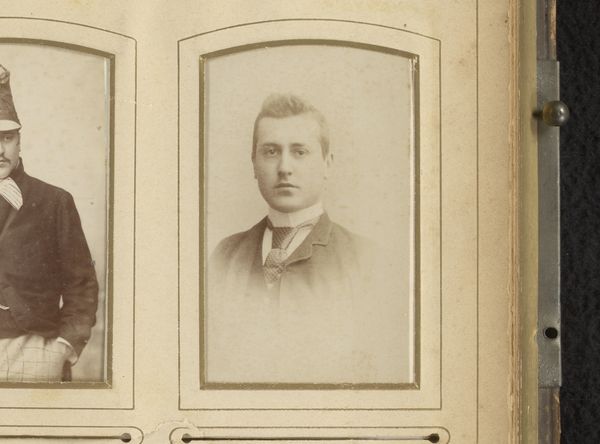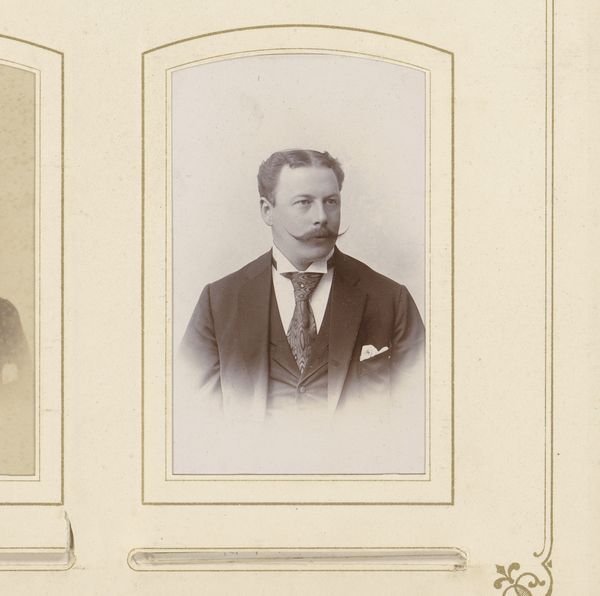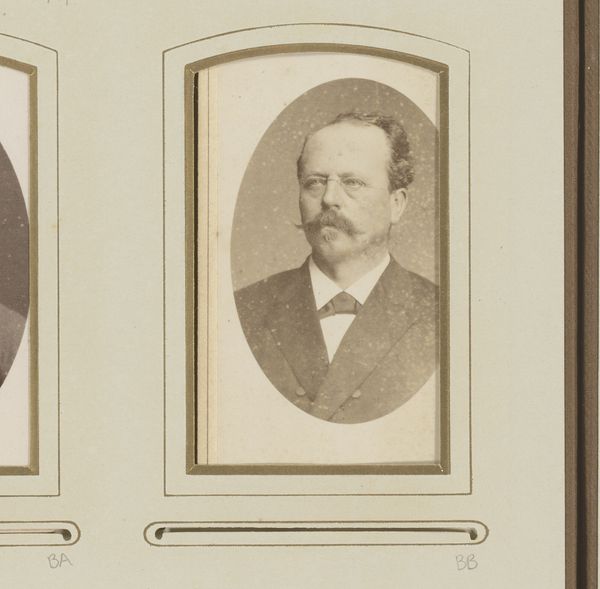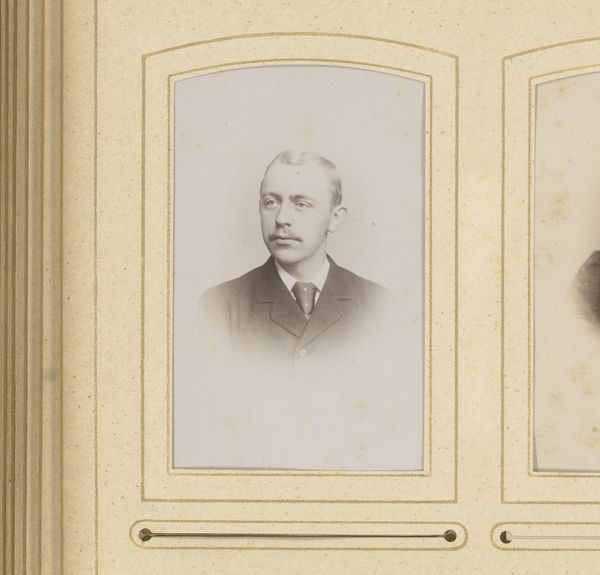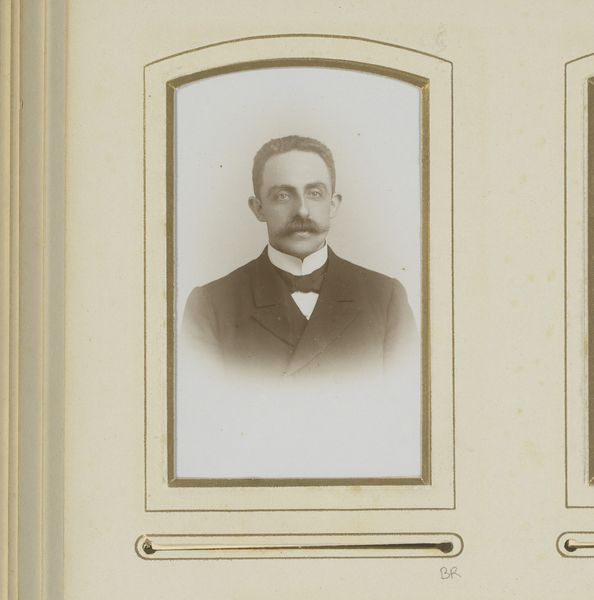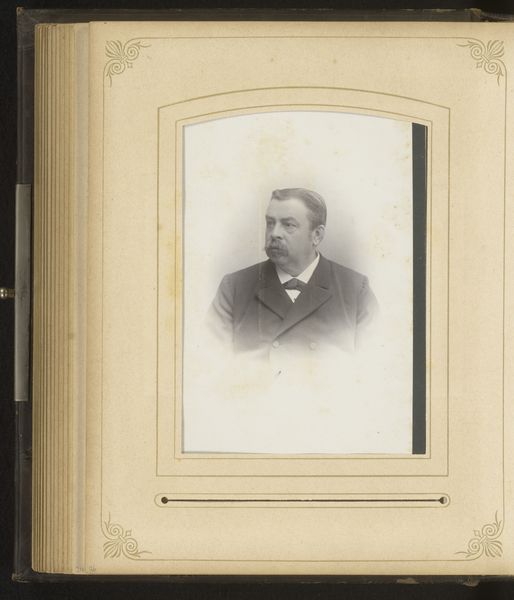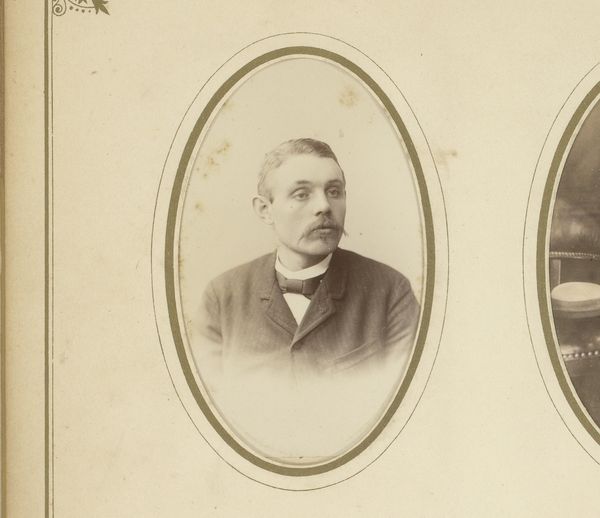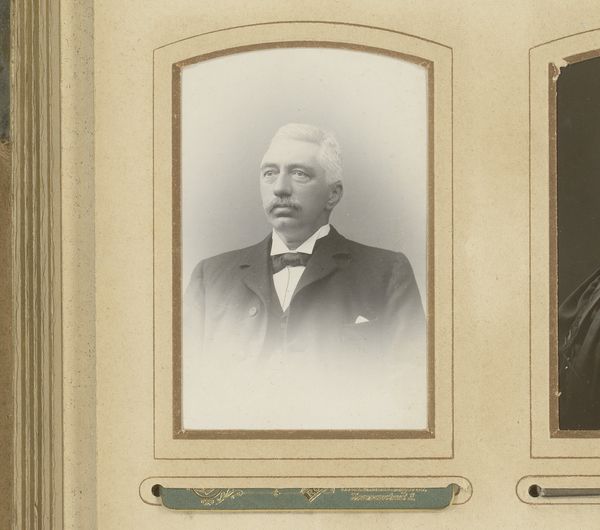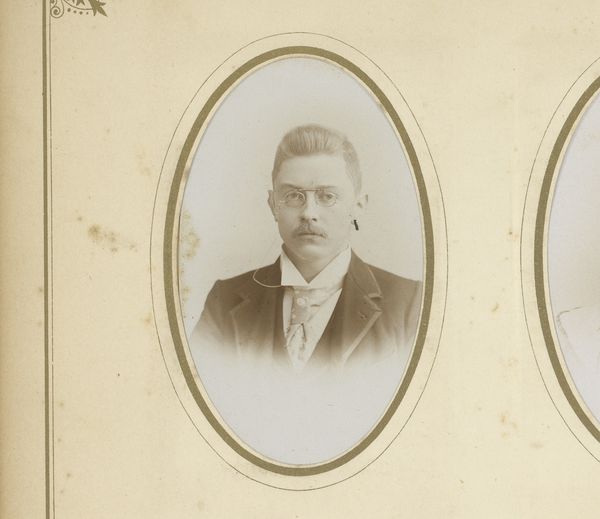
photography
#
portrait
#
art-nouveau
#
charcoal drawing
#
photography
#
historical photography
#
portrait art
#
realism
Dimensions: height 83 mm, width 53 mm
Copyright: Rijks Museum: Open Domain
Curator: This portrait, aptly titled "Portret van een man met snor," translates to "Portrait of a man with a moustache." Attributed to Gillard & Delvaux, it dates to the period between 1903 and 1906. Editor: My first thought? This dude has *presence.* He's got that turn-of-the-century swagger. There is some kind of mystery here. Curator: It's a fascinating example of early 20th-century portraiture. Consider the societal role of photography at the time. These weren't casual snapshots, but carefully orchestrated representations of status and identity. Editor: Status, yes, definitely. Look at the confident way he’s styled and presented himself. I’m curious though – what kind of narrative can we construct for a man in portrait in that era? Was it just as simple as wealth and comfort or could there be hidden messages of revolution simmering beneath the surface? Curator: Hidden revolution might be too strong, but certainly, social mobility was on the rise. The ability to commission a portrait, once limited to the aristocracy, now extended to a burgeoning middle class eager to stake its claim in society. This is likely someone of modest means seeking to assert himself, following conventions while forging his own path. Editor: Interesting… He seems caught between worlds: formality versus… slight rebellion in those eyes. It’s so faint but still detectable. I think what grabs me most is how much personality comes through, despite what must have been very stiff posing. He seems aware of the performance of posing. Curator: The moustache is certainly the focal point, framing his other features. I see that playfulness also but in some way the piece reminds me that there is nothing truly individualistic when it comes to historical contexts because he will always, as subject and object, reflect societal constraints. Editor: But is the *portrait* itself always stuck there, I wonder? For me, images can gain a sense of independence after being created; it depends on what new observers bring to it in later times. I guess I want this photograph to have some mystery in how that conversation changes over time. Curator: The dialogue between the past and present… that's the power and challenge of historical inquiry. Thinking about photography, portraiture, representation makes us better equipped to be analytical of modern modes. Editor: Yeah, art reminds us to see what was—and also what *could* be. I like spending a few moments imagining a fuller version of this mustachioed guy's reality.
Comments
No comments
Be the first to comment and join the conversation on the ultimate creative platform.
